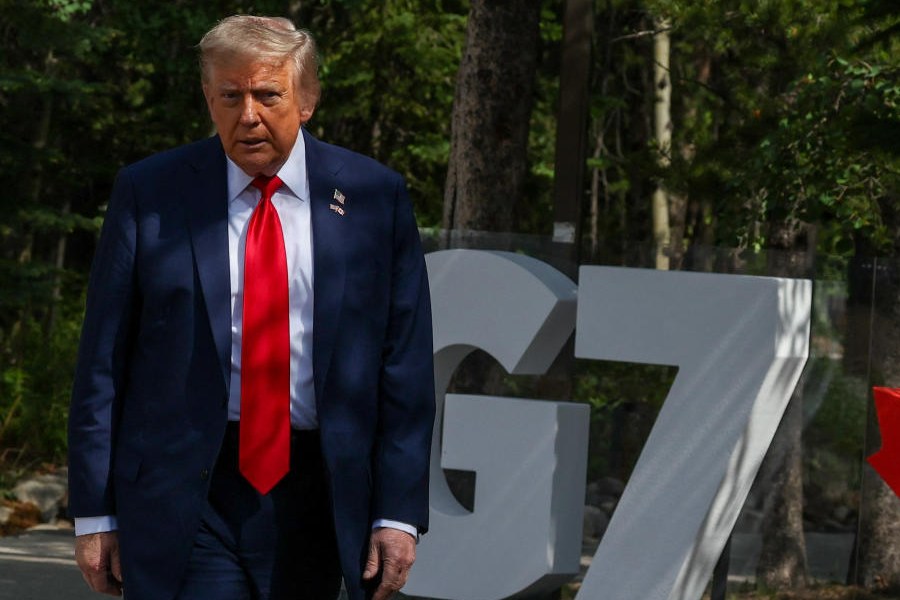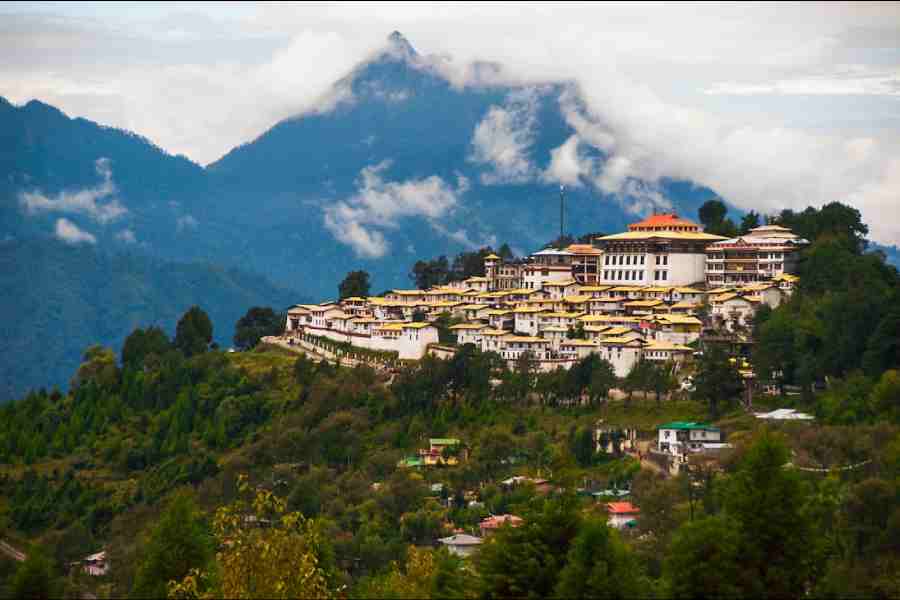|
|
ramguha@vsnl.com
A student of Indian cricket well knows that behind the British ideal of “fair play” lies a long history of hypocrisy and deception. When the colonists brought cricket into the subcontinent, it was to play the game among themselves. When the natives took to cricket nonetheless, the rulers mocked them. Later, as the Indians got better and better, they patronized them. “It is in the matter of patience that the Indian cricketer will never be equal to the Englishman.” Thus Lord Harris, writing in 1921. The answer to this magisterial judgment was to come five decades later, in the shape of a Little Master named Sunil Manohar Gavaskar.
Still, compared to how they behaved in South Africa, the Europeans in India were positively benign. In the Veld, the rulers repeatedly rejected invitations to play against black cricket teams, whereas in colonial Bombay, the British played annual matches against representative teams of Parsis, Hindus, and Muslims. In South Africa, the whites cornered all the good turf for themselves, leaving only broken, irregular ground for the blacks. True, native cricketers in India also had to struggle, and sometimes struggle hard, but well before independence they were able to build for themselves the magnificent Brabourne Stadium, wistfully described by a black South African visitor in 1944 as “a lovely ground [with] sitting accommodation, shelters, all over, yes. I haven’t seen one like that before in my life! I didn’t know whether I was in India or in America…”
Even by comparison with the West Indies, the burdens placed on black cricketers in South Africa were extraordinarily harsh. That, at any rate, is the conclusion one comes to after reading Blacks in Whites: A Century of Cricket Struggles in KwaZulu-Natal by Ashwin Desai, Vishnu Padayachee, Krish Reddy and Goolam Vahed (University of Natal Press, 2002). This is a remarkable work of collective scholarship. There is a meticulous detailing here of the game’s organization, of the fate and fortunes of clubs, associations and tournaments. There are some charming cricket stories, and many portraits of individual cricketers.
In a wider sense, the development of cricket in KwaZulu-Natal is located in the region’s social history. The interconnections between sport on the one hand, and society and politics on the other are made manifest throughout. Both Nelson Mandela and Albert Luthuli make several appearances in the book: each time, they appear not superfluously or gratuitously, but logically and naturally.
The publication of Blacks in Whites is timed to coincide with the cricket World Cup now being held in South Africa. That tournament is, in the first instance, a triumph of commerce. It is well, then, to be reminded by this book of the claims of social justice, of the complicated and tortured history of cricket in South Africa.
As we learn from Blacks in Whites, Indian, African, coloured and Malay communities were obliged by the structure of colonial authority to maintain distinct teams and associations. Sometimes the divisions ran deeper — thus Indians were prone to separate themselves on grounds of religion or region of origin, with Muslims and Gujarati Hindus founding their own, exclusive, cricket clubs. (One time, more hearteningly, the axis of solidarity was that of class, the formation of an eleven of railway workers.) Notably, the Indians displayed a strong desire to connect to the motherland. Thus a Muslim team named itself after the separatist poet, Mohammed Iqbal, while a cricket club oriented towards the nationalism of the Congress took as its patron the poet who was instead Gandhi’s friend, Sarojini Naidu.
African cricket, meanwhile, was nurtured and promoted by missionaries. A particular seedbed of talent was Adams Mission College in Amanzimtoti, one of whose principals was the former West Indian captain, G.C. Grant. The tiny coloured community in Natal ran its own clubs and tournament. The Malays were compelled to do the same from the mid-Twenties, after the Indians stopped playing with them. Altogether, the story of non-white cricket, as of much else in colonial South Africa, was (as told from the white point of view): “You divide, we rule.”
Then, after World War II, a handful of precocious pioneers began to promote non-racial cricket. In 1950, a new board, the South African Cricket Board Of Control, was formed, bringing together all non-white teams. Representative sides of the different “races” began playing one another. This helped develop the game, but also tended to freeze social identities. From the early Sixties, there arose a vigorous movement to properly integrate cricket, to abolish tournaments run on racial lines and to promote teams based on affiliations of school, college, town and district.
The next step was to integrate white with non-white cricket. Desai and company provide a fascinating and not excessively polemical account of how the white-run South African Cricketers’ Association tried to resist this, by offering financial inducements to black cricketers, while discouraging them to play with or against white players. The SACA was a past master at tokenism: offering, for example, to include one or two black cricketers in the odd match against touring teams, thus making them honorary whites for the day. These offers divided black cricketers and administrators: some were inclined to accept them, others prone to reject them on the grounds that one couldn’t really have “normal sport in an abnormal society”.
As for the stars of white cricket, the Bachers and Pollocks and Richardses, they held out a ginger finger in favour of inter-racial cricket, without ever challenging the premises or future of apartheid itself. These white heroes were quite in favour of the rebel tours of the Eighties, whose mixed morals and cynical execution are well described in this book. Most black sportsmen, bravely and honourably, refused to endorse the visits of renegade Sri Lankan and West Indian cricketers. Those who struggled for “the free interaction of all human beings in all the activities of society on the basis of total equality and opportunity without regard to race” would scarcely accept, as a substitute, “the mere physical presence of cricketers of different races and colours on the cricket field”.
The last sections of Blacks in Whites run crisply over the tumultuous events of the last decade: the ending of apartheid, the formal integration of society and of sport, and the lingering conflicts and resentments on both sides. The promises to develop and encourage young black cricketers remain somewhat unredeemed. The authors suggest that a subtle discrimination in favour of white cricketers continues, with the black administrators now in power charged with betraying past commitments in order to retain their now “cushy lifestyles”.
Blacks in Whites is a an exemplary work of social and political history. But this is not just a “history” book, but also a cricket book. The text is illuminated and humanized by sketches of cricketers unhonoured by history solely on account of the colour of their skin. Among the players lovingly rehabilitated here are the all-rounder, Kudoos, who was also a crack centre-half at football and knew half-a-dozen languages besides; the padre of left-wing orientation, Bernard Sigamoney, who bowled a mean off-break when not organizing workers’ unions; the hitter, M.I. Yusuf, compared here to Kapil Dev and Ian Botham; the accomplished African batsman, E. Masiza, so “very severe on the off-side”; and the great slow left-arm bowler, Thoplan Parsuramen, whose career and character recalled for this writer the career and character of the Indian slow left-armer Palwankar Baloo, likewise denied the chance to play in official test matches.
This, then, is a book steeped in sociological insight, but also rich in cricket lore. Among its many illuminating cameos is the account of a partnership between the brothers Cassimjee in a club match of the Forties. The brothers batted together for upwards of four hours, adding five runs in the interim. The opposing side, in disgust, conceded the match. And Lord Harris, had he ever heard of this, would have certainly conceded that black batsmen could be patient too.











